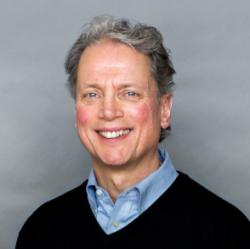For us the rebirth of Russia is inextricably tied, first of all, with spiritual rebirth … and if Russia is the largest Orthodox power [pravoslavnaya dershava], then Greece and Athos are its source. —Vladimir Putin during a state visit to Mount Athos, September 2005.
Writing for the Carnegie Council, Nicolai N. Petro says that Russian President Vladimir Putin’s “call for greater respect for traditional cultural and religious identities was either missed or ignored in the West. One reason, I suspect, is that it was couched in a language that Western elites no longer use.” Summary of his report:
For many analysts the term Russky mir, or Russian World, epitomizes an expansionist and messianic Russian foreign policy, the perverse intersection of the interests of the Russian state and the Russian Orthodox Church.
Little noted is that the term actually means something quite different for each party. For the state it is a tool for expanding Russia’s cultural and political influence, while for the Russian Orthodox Church it is a spiritual concept, a reminder that through the baptism of Rus, God consecrated these people to the task of building a Holy Rus.
The close symphonic relationship between the Orthodox Church and state in Russia thus provides Russian foreign policy with a definable moral framework, one that, given its popularity, is likely to continue to shape the country’s policies well into the future.
More on Putinism:
… Vladimir Putin’s high popularity ratings are neither transient nor personal. They reflect the popularity of his social and political agenda, which are popular precisely because they have the blessing of the Russian Orthodox Church. A few years ago, then president Medvedev referred to the Church as “the largest and most authoritative social institution in contemporary Russia,” an assessment reinforced by more recent surveys showing that Patriarch Kirill is more often identified as the “spiritual leader [and] moral mentor” of the entire Russian nation, than he is as the head of a single religious confession.
The success of the Putin Plan, the Putin Model, or Putinism, is thus simple to explain. This Russian government understands that it derives enormous social capital from its public embrace of the Russian Orthodox Church. So long as Russia remains a broadly representative (not to be confused with liberal) democracy, there is little reason to expect this to change.
Some analysts, however, suggest that this embrace may lead to conflict between the state and other confessions. The potential for such conflict is widely recognized, especially by religious leaders, and led to the creation in 1998 of the Interreligious Council of Russia. Its purpose is two-fold: First, to defuse conflicts among the various religious communities. Second, to present a united religious agenda to politicians. It has been quite successful on both fronts, and its activities now cover not just Russia, but the entire CIS (Commonwealth of Independent States).
Read “Russia’s Orthodox Soft Power” by Nicolai N. Petro on the website of the Carnegie Council.

